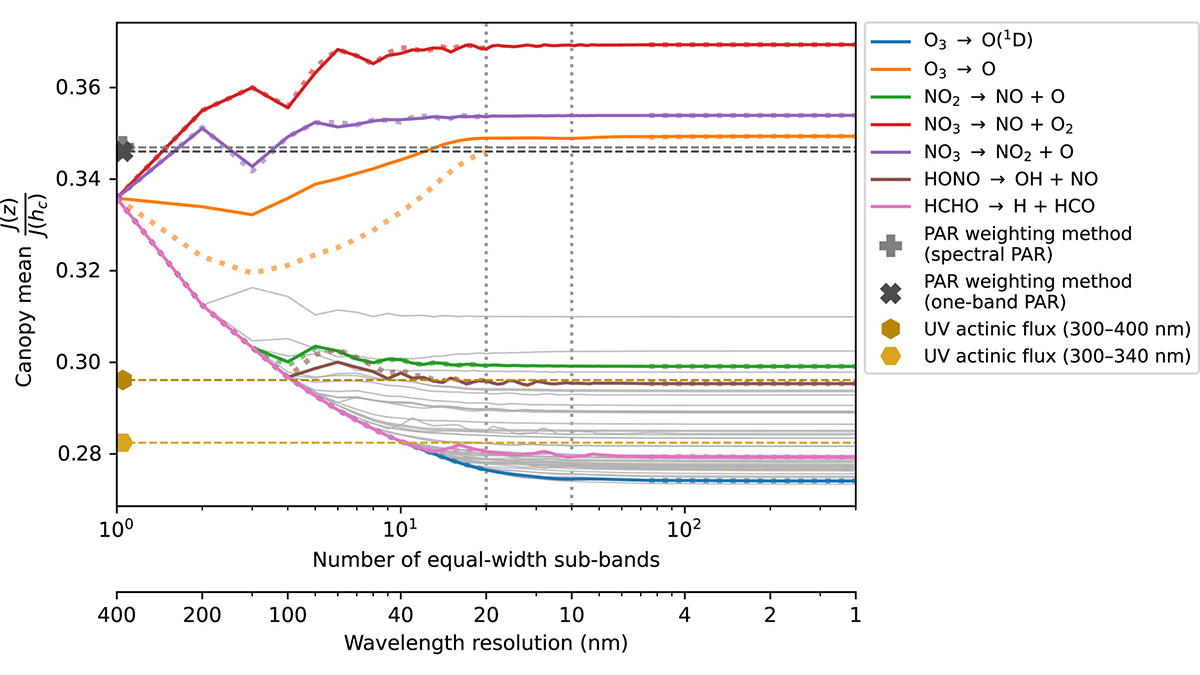Editors’ Highlights are summaries of recent papers by AGU’s journal editors.
Source: Journal of Advances in Modeling Earth Systems
Radiative transfer (RT) in plant canopies is an important process to represent in land surface models. Canopy RT determines how much global solar energy is reflected (albedo) and how much is absorbed by canopy (foliage and stem) elements and the ground (soil) surface.
Moon and Fuentes [2024] introduce a new method for high-resolution spectral solar radiative transfer modeling in plant canopies, addressing critical gaps in current ecological and environmental numerical modeling. This rigorous methodological approach, comparing various radiative transfer models, is particularly noteworthy for its potential to enhance accuracy in predicting photochemical processes essential for climate modeling and ecological assessments.
This work is especially relevant and valuable for broad scientific and practical applications in environmental science and climate change studies in regions where the land surface is dominated by tall and dense forest canopies.
Citation: Moon, Z., & Fuentes, J. D. (2024). Evaluating numerical methods to investigate spectral solar radiative transfer in plant canopies. Journal of Advances in Modeling Earth Systems, 16, e2023MS004136. https://doi.org/10.1029/2023MS004136
—Jiwen Fan, Editor, JAMES


